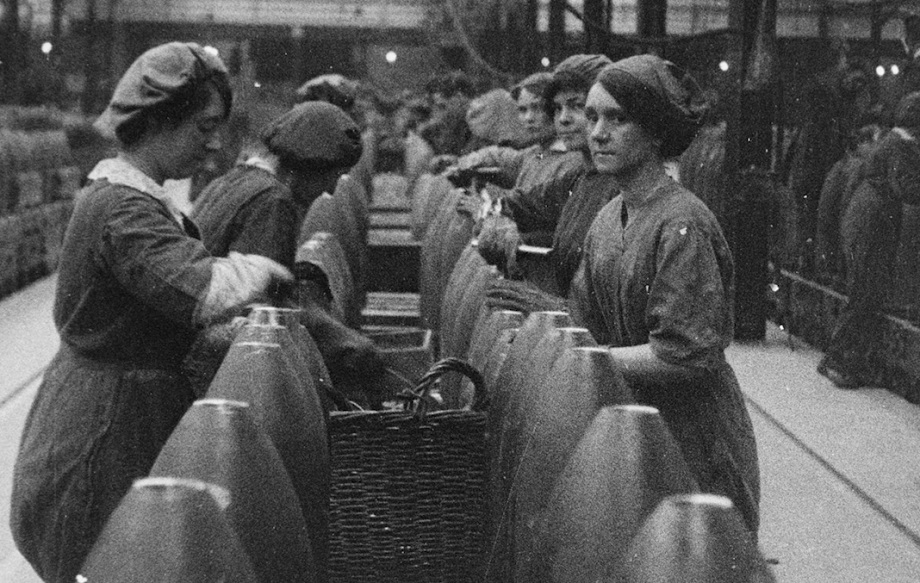New in the Archive: Rare First World War Film of Munitions Workers
Footage of Chilwell shell factory found in shed seen for the first time in 100 years
Originally filmed by the War Office in 1917 to show the daily lives of munitions workers drafted in to help with the war effort, the Kodak film was in a terrible state when it was found in a garden shed four years ago. Following painstaking work by film technicians at IWM, the film can now be seen a century later and is available for licensing.
IWM 1223 - DAILY LIFE IN NATIONAL SHELL FILLING FACTORY No.6 AT CHILWELL DURING THE FIRST WORLD WAR
It is all the more poignant as months after the footage was shot inside Chilwell's National Shell Filling Factory in Nottingham an explosion killed 134 workers, mainly women and children, thought to have been triggered by hot weather. The black-and-white film gives a fascinating glimpse of life on the home front in the First World War when women made up about one third of the workforce.

The workers, nicknamed 'Canary Girls' filled the large shells with the high explosive amatol
Workers, including many women and teenage boys, are seen rolling heavy shell cases around the giant foundry, painting and marking the casings, pouring in liquid amatol and tampering down the explosive mix with a heavy mallet and dowel. In other scenes women sit at tables, dusting and lubricating brass contact fuses before they are fitted, while others drive cranes speeding along roof joists overhead. At the end of their shift they are seen sliding down ropes from the cranes to the floor.

Rebecca Harding, a curator and film specialist at Imperial War Museums, answers a few questions regarding the 'lost' film and its journey into the IWM archive.
What state was the film in when it arrived at IWM?
When it arrived at Imperial War Museums’ specialist film handling facilities at Duxford it was in several pieces and in a perilous state of decay, with the substantial water damage badly affecting the surface of the nitrate film.
What work has been carried out by the technicians?
We have very carefully cleaned it and put it on to 35mm film. By joining the pieces together – all 1400 feet – and feeding the film delicately through specialist recording equipment at just four frames a second, technicians were able to create a new film master, which is now available to view on the IWM website. It is worth noting that there is still some water damage and the film is not completely restored but we have the expertise inhouse to do further cleaning if required.
What is the significance of this film in the IWM Collection?
This footage was a significant find as it highlights the impact the war had on women in the workplace and clearly shows the dangerous nature of the work carried out in such factories. It seems like it was filmed at the same time as a War Office propaganda film, A Day In The Life Of A Munitions Worker which is also held by IWM, but this footage is much less staged and feels more like a fly-on-the-wall documentary giving a more accurate portrayal of what it was like to work at the factory.
